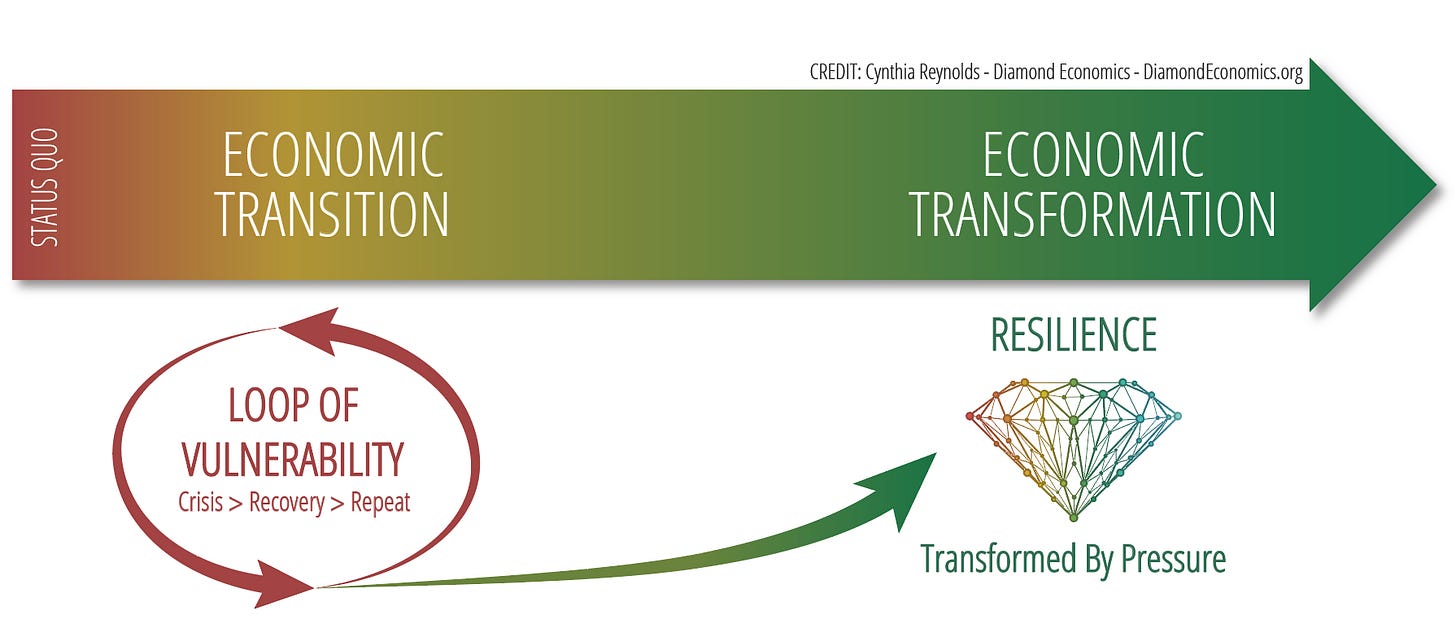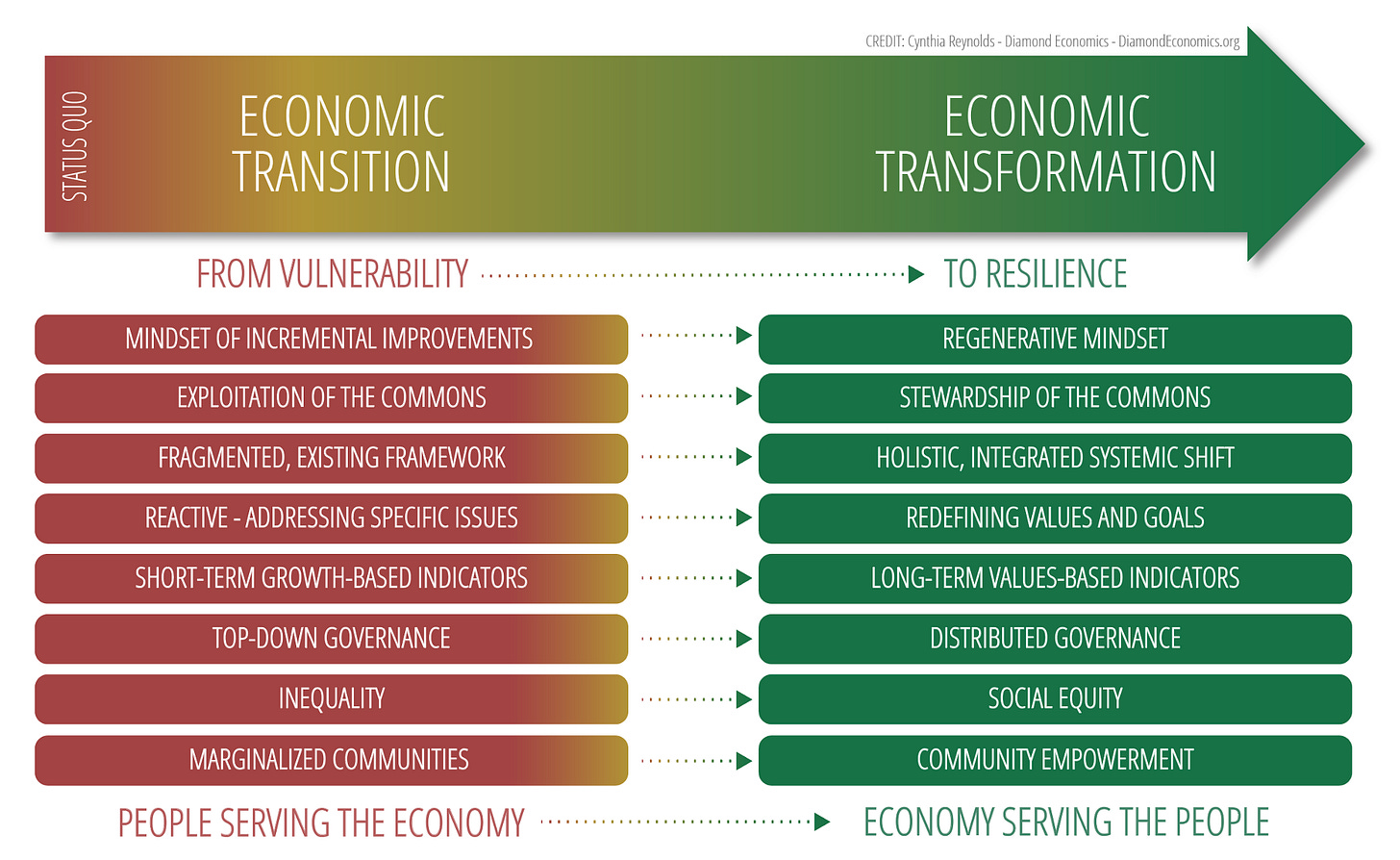Canada’s Circular Moment—A Catalyst for Economic Transformation
From Latecomer to Front-Runner: Canada's Rise in Economic Transformation
The Canadian Circular Economy Summit was held in Montréal this week, and I’m struck by how far Canada has come—and how much potential it holds to lead the global shift toward Economic Transformation. The Summit showcased remarkable progress and growing momentum across the country, and I left deeply inspired.
The opening and closing ceremonies, led by Ka’nahsohon Kevin Deer, Faithkeeper of the Mohawk Trail Longhouse, set a powerful tone of respect, interconnectedness, and responsibility—principles that are not only central to Indigenous knowledge systems, but also fundamental to circular economy thinking. This cultural framing offered a profound backdrop for all the conversations that followed.
A Nation Under Pressure—and Poised to Lead
What makes Canada’s position uniquely powerful right now is how external political and economic pressures are catalysing a new kind of domestic resilience.
The Challenge:
How can Canada protect its economy from external shocks, while advancing toward a future that is not just sustainable, but resilient, inclusive, and regenerative?
The Opportunity:
To use these pressures—not just to recover, but to be transformed by them.
With Trump’s return and his protectionist tariffs casting economic uncertainty over North American trade, Canada finds itself in a challenging spot with its longtime ally and partner. But in true Canadian fashion, a distinctly national response has emerged: “elbows-up” —assertive, not aggressive. Paired with Canada’s well-known “Can-Do” attitude, this becomes the perfect storm of motivation, capability and pride to push beyond economic transition and into true economic transformation.
Breaking the Loop of Vulnerability
Canada now stands at the edge of a decision:
Do we remain caught in the Loop of Vulnerability—Crisis > Recovery > Repeat?
Or do we use this pressure to reshape the system entirely?
Pressure can do more than break. It can shape.
When aligned with purpose, pressure can transform—formed by connection, cut through clarity, and shaped with intention.
A system with facets. A future by design.
This is the essence of Economic Transformation.
This is Diamond Economics.
Blueprint for Transformation
I was honoured to be asked to moderate the session titled "Blueprint for Transformation"—a perfectly fitting space to present my framework that delineates Economic Transition from Economic Transformation.
Unfortunately, I lost my voice completely after Day 1— thankfully Paul Shorthouse of Circular Economy Leadership Canada stepped in brilliantly, while I watched (quietly!) from the front row.
The panel (consisting of Alexander Hay - Chairman Rethink Sustainability Initiatives, Maya Colombani - Chief Sustainability & Human Rights Officer L'Oréal Canada, Jorge Daniel Taillant - Executive Director Commission for Environmental Cooperation and Melissa Gorrie - Law Reform Manager & Circular Economy Project Lead Ecojustice) discussion explored Systems Change Leverage Points, focusing on the practical, structural, and cultural interventions required to make transformation not just possible—but inevitable.
A Cultural Shift, Not Just a Policy Shift
The Summit itself acted as a Catalyst for Transformation—helping define shared norms and values, a common vocabulary, and cross-cultural understanding. This work is essential if we are to bridge linguistic, regional, and generational divides in the effort to co-create a circular and regenerative economy.
In a world increasingly defined by volatility, Canada is showing how economic transformation—rooted in circular principles and grounded in a unifying cultural ethos—can become a national advantage. This is not just about economic survival. It’s about economic reimagination.
From Latecomer to Front-Runner
Canada was once considered a latecomer to the circular economy conversation. But that may prove to be its greatest strength. While some countries are still optimising recycling rates, Canada is increasingly looking beyond the loop—embracing full-system redesign.
Many nations are lost in transition.
Canada has the chance to lead transformation.
With external pressures creating urgency, and internal cohesion unlocking action, Canada has all the ingredients to become a global front-runner in resilience, regeneration, and economic transformation.
Carrying Wisdom Forward
As we move forward, let us carry the wisdom shared by Kevin Deer—a reminder that our economic systems must honour the interconnectedness of all things, and our responsibility to future generations.
If we can do that—then Canada’s journey toward a circular economy will not only be about resilience—but about creating a more just, sustainable, and harmonious world for all.
I am thrilled to have had the chance to meet up with Canadian members of the Circular Economy Coalition working both locally and nationally and meeting so many value-aligned people interested in collaboration going forward. Insightful conversations with startups, established industry leaders, policymakers, investors and more.
So, while Norway is what I have called home for 25 years - my heart still sings O Canada!








